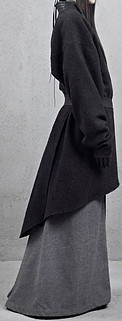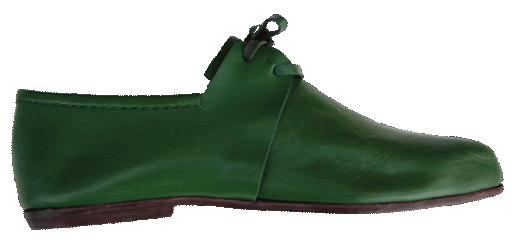top of page
'21 incubation #2
royalty, peerage & aristocracy: men & women

.jpg)














The King
Richard falls from the highest position in the realm, to the deepest dungeon in the land. The play opens at Court with Richard sweeping in to educate a hostile situation between two of the most combative and powerful Lords of the day - Bolingbroke and Mowbray, sworn enemies.
Richard is dressed in robes befitting his rank and situation.
As the play unfolds, his regal countenance
morphs and changes too.
From the Lists at Coventry, to the battlements of Flint Castle, and finally, the dungeon at Pomfret Castle, Richard's lookbook should reflect his spectacular fall from grace.
Inspiration: history/modern fusion
Flashword: unique
Concept: anointed King : none above him

Henry Bolingbroke
Duke of Hereford
.jpg)
















Bolingbroke's story arc is robust and rocky - from powerful influential first cousin to the King to banishment and eventually, upon his return to England, the usurper of the Crown.
A lot is a stake for Henry: his birthright and inheritance; and a 'Nobles cause' to unking a King, and set wrongs right.
Traversing the English Channel by ship, travelling rough by horse throughout England and Wales, scaling battlements, arm to arm combat, raising an army against the King and tense aggressive encounters with opposing forces suggests fine robes of State, grand livery and the trappings of Dukedom would be out of place.
His lookbook acknowledges that his breeding is Noble but his actions and words are bold, his intentions are assertive and aggressive, his way of living throughout the play is bold, determined: and speaks to his end-game which sees him become Henry IV at plays' end.
Inspiration: Contemporary
Flashword: Change Agent
Concept: Guerilla grunge and Royal rebel


















Thomas Mowbray
Duke of Norfolk
Thomas de Mowbray, 1st Duke of Norfolk and Richard's personal favourite.
An impressive peerage and one that would, in the end, not save him from banishment and disgrace.
As key suspect in the shadey demise of Gloucester, Mowbray matches Bolingbroke in inflammatory accusations, vitriolic speech and aggressive behaviour from the outset: they loathe each other: accusations fly, unbridled and vicious.
His look-book should consider his rank whilst simultaneously being versatile enough to meet an aggressive physical threat head-on, arms and gages at the ready.
Underneath his well-crafted outerwear, perhaps emblazoned with his Coat of Arms, Mowbrey is ready for any occasion should it become combative/aggressive.
Inspiration: history/contemp. fusion
Flashword: Political Animal
Concept: Courtly but combative

Director's Note:
Shakespeare often drew from his own time and place for inspiration, themes, plots and characters for his plays. He took enormous 'postic licence' in writing plays that his audiences would relate to on-stage at the Globe. In Richard II, as with a number of his 'history' plays (in particular), one of the first casualties of Shakespeare's liberal use of poetic license were his citing of names and places: Shakespeare bent the rules writing about Royal/Peerage subject matter by changing names, renaming locations or re-imagining the historical chronology to protect himself and the Globe from prosecution; and to protect the guilty, or innocent, as named in the plays, as the case may be.


_edited.jpg)










John of Gaunt
House of Lancaster
The most senior member of the Royal household, John of Gaunt has an impressive CV: fourth son of King Edward III, brother to Thomas of Woodstock, one of England's foremost military leaders, father to Bolingbroke and uncle to Ri2.
Gaunt dies early on in the play but his presence is catalytic: his death triggers a sequence of events that leads to the return of Bolingbroke from exile, and the toppling of Richard off the throne of England.
His lookbook should reflect his gravitas as a long-term politician and senior royal who harks back to 'old school' notions of chivalry, duty and self-discipline mixed skilfully with pragmatism and a sharp objective viewpoint that has kept him alive through decades of Courtly and Royal intrigue, in-fighting and treachery.
Inspiration: history/contemp.
Flashword: Survivor
Concept: Distinguished and Old-School
Director's Note:
There is a strong commitment to gender-neutral, inclusive and diverse casting. With that in mind, there has been a distillation process paying close attention to an overall costume aesthetic that will suit all actors who are cast in the male roles in a 'dreamscheme' production of Richard 2. The challenge is to balance the status of the role regardless of casting choice with visual flow and overall production aesthetic - because a female actor is playing a male role (traditionally played by a male actor), the costume shall reflect the role, the character, the moment not the fact that a female actor is playing a male role.














Queen Isabell
of Valois



Duchess of York
Isabella of Castille
Duchess of Gloucester
Eleanor de Bohun





In a play top-heavy with male roles and redolent with machismo angst, aggressive discord, chivalrous
posturing, treachery and murder, these women offer shade and nuance especially in terms of raw emotional brevity, declarations of love, anguish, insight into a royal relationship under 'extremis' and conflicted loyalties and moral jeopardy when a son is exposed as a traitor by his parents.
Ri2 is high stakes from page 1, for all characters.
All three women come from esteemed family backgrounds; and two of them are from Europe - Duchess of York - Spain, and Richard's Queen - France.
Lookbooks for these women, will take key inspiration from historical origins and status for their individual lookbooks.
Inspiration: country of origin
Flashword: emotional integrity
Concept: history/modern
























Ladies-in-Waiting
Companions, dressers, hair stylists, confessors, conveyors of Court gossip and social news, food tasters, personal hygiene assistants and 'soft' buffers against visitors (welcome and otherwise) wanting too much of their Mistresses time.
Ladies-in-Waiting were expected to be intelligent and loyal: they were trusted members of the inner sanctum of their Mistresses lives and personal habits.
Drawn from the ranks of the wealthy and aristocratic families, often too from professional and landed gentry families who had shown loyalty and had maintained strong ties to the Crown.




bottom of page